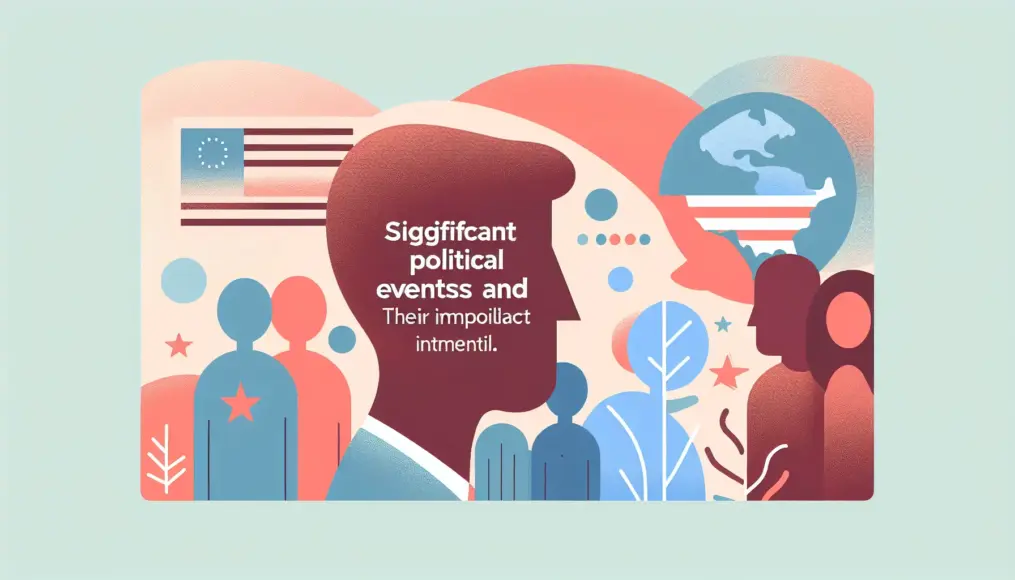Welfare policy is a crucial theme that deeply impacts our lives. By understanding how Japan’s welfare policies have evolved, we can gain insights into the future of our society. In this article, we’ll take a look at the history of welfare policies and the social changes that have shaped them, as well as the challenges we currently face.
We’ll also delve into firsthand accounts from those working in the welfare sector to see how these policies affect real lives. We’ll shed light on often-overlooked needs and discuss potential solutions, providing a starting point for considering the future of welfare policy.
- Review the history of Japan’s welfare policy, from its post-war establishment to its current state
- Discover the real impacts of policy through experiences from the welfare sector
- Identify hidden needs and propose concrete solutions to envision a better future
A Look Back at Japan’s Welfare Policy History
Japan’s welfare policy began to take shape during the post-war reconstruction period. At that time, many citizens were struggling with difficult living conditions, prompting the government to establish a welfare system. These policies play a crucial role in supporting the lives of the people, and understanding their evolution helps us reflect on the current state of society and consider its future direction. Let’s start by examining the establishment of welfare policies after World War II.
The Establishment of Post-War Welfare Policies
After the war, Japan was in the midst of economic recovery. The backdrop to the establishment of welfare policies included social upheaval and economic hardship resulting from the conflict. To improve the health and quality of life for the populace, several systems were introduced. Notably, the livelihood protection system and health insurance were put in place, allowing many individuals to receive the necessary support.
Initially, assistance was limited in scope, but over time, the range of beneficiaries and services expanded, transforming welfare policies into an essential foundation of citizens’ lives. These policies began to be recognized as rights of the people, leading to a demand for a more comprehensive approach.
- Post-war Japan began to develop welfare policies
- The livelihood protection system and health insurance were introduced
- Welfare policies play a vital role as a foundation for citizens’ lives
Significant Changes in Welfare Policies
Welfare policies have evolved alongside changes in society. Particularly after the 1980s, various reforms were implemented to adapt to economic growth and shifts in social structure. This era saw a focus on promoting community welfare and enhancing support for people with disabilities, creating an environment where more individuals could access assistance.
Moreover, as Japan faces challenges stemming from a declining birthrate and an aging population, welfare policies are now confronted with new issues. With the increasing importance of supporting the elderly and people with disabilities, there is a growing need to reassess existing policies and introduce new systems. In this way, welfare policies are continuously evolving.

If you found this article interesting, you might also enjoy “Exploring the Evolution of the Welfare State and Its Psychological Impact.” This piece offers an in-depth analysis of how the historical evolution of welfare states and policy changes affect individual psychology, providing further insights into the significance of welfare policies.
- Since the 1980s, various reforms have been implemented in welfare policies
- Community welfare and support for people with disabilities have gained emphasis
- New systems are needed to address challenges posed by an aging population
The Impact of Policy from the Perspective of Welfare Services
How do welfare policies actually function in the real world? Every day, countless individuals receive various forms of support in welfare settings. Understanding how these policies influence their lives is crucial for developing better welfare systems. In this section, we will explore the effects of welfare policies through real-life experiences and highlight specific examples to deepen our understanding of their importance.
Real-Life Experiences
The testimonials from those working in the welfare sector provide concrete evidence of how policies impact individuals. For instance, a staff member at a nursing facility shares their experience supporting elderly residents who rely on public assistance. Thanks to welfare policies, these seniors receive the medical care and daily support they need, allowing them to live with peace of mind.
Community volunteer activities also play a vital role. When volunteers operate based on welfare policies, they strengthen community bonds and extend a helping hand to isolated seniors and individuals with disabilities. Through these personal stories, we can feel how welfare policies are rooted in the everyday lives of people.
- Real experiences in welfare settings illustrate the impact of policies
- Support for elderly individuals on public assistance is a direct benefit of these policies
- Community volunteer activities play a crucial role in supporting welfare policies
Examples of Policy Impact
Welfare policies have a tangible impact on many lives. For example, the enhancement of disability welfare has strengthened support for individuals with disabilities, enabling them to lead independent lives. As a result, many are able to find employment and participate more fully in society.
Moreover, child-rearing support policies are also significant. Improvements in parental leave systems and the expansion of childcare facilities allow working parents to raise their children with greater confidence. These policies contribute not only to families but also to the overall vitality of society.
- Enhancements in disability welfare enable independent living
- Child-rearing support policies assist working parents
- Welfare policies are a crucial element in boosting societal vitality
Uncovering Hidden Needs and Solutions
Welfare policies are designed to support the lives of many, but there are often overlooked needs that deserve our attention. In particular, the voices of people in specific regions or circumstances may not always be heard, highlighting the importance of addressing these issues. In this chapter, we will explore hidden needs and propose concrete solutions. Understanding and addressing these needs is vital for creating a society where everyone can live with confidence and security.
Overlooked Needs
While welfare policies support many individuals, there are subtle yet significant needs that often go unnoticed. For instance, elderly residents and people with disabilities may experience feelings of isolation in their communities. Additionally, families facing economic hardships may find that their children have limited opportunities for education. These issues can signal a need for a reassessment of existing policies.
Moreover, many individuals require mental health support, yet their needs are frequently overlooked. Welfare policies often prioritize physical assistance, but mental well-being is just as crucial. Recognizing these neglected needs is the first step toward developing more inclusive welfare policies.
- The isolation experienced by overlooked elderly individuals and people with disabilities
- Economic hardships limiting children’s educational opportunities
- The difficulty of integrating mental health support needs into policies
Proposing Concrete Solutions
One effective solution to address hidden needs is to foster community-building initiatives. When local residents collaborate and reach out to those who feel isolated, they can strengthen emotional connections within the community. Organizing local events and volunteer activities creates an environment where people can support one another, which is essential for enhancing social ties.
Additionally, it is important to revisit and refine welfare policies. Policymakers should recognize hidden needs and introduce new systems and support tailored to these issues. For example, enhancing programs focused on mental health can make it easier for individuals to access the care they need.
- Reducing feelings of isolation through strengthened community ties
- Introducing new support systems by revisiting welfare policies
- Expanding programs dedicated to mental health
Looking Ahead: The Evolution of Welfare Policy
Welfare policy has continually evolved to meet the changing needs of society, and many challenges lie ahead. Issues such as an aging population, regional disparities, and economic hardships are all influencing our welfare policies. To overcome these challenges and build a better future, what kind of vision do we need? In this section, we’ll explore the upcoming challenges and prospects while highlighting the importance of citizen participation.
Future Challenges and Prospects
The future of welfare policy is fraught with various challenges. Particularly with the progression of an aging society, there is an anticipated increase in the demand for caregiving and medical services. Additionally, there is a growing need to strengthen support for individuals with disabilities and low-income families. In response to these challenges, the government must introduce new policies and adapt flexibly.
On the flip side, advancements in technology are opening up new possibilities for welfare policy. Innovations like telemedicine and AI-driven support systems are being developed, making it easier for more people to access the assistance they need. The welfare policies of the future will need to incorporate such technologies while providing support that is increasingly diverse.
- Increased demand for caregiving and medical services due to an aging society
- Strengthening support for individuals with disabilities and low-income families is essential
- Technological advancements offer new possibilities for welfare policy
The Importance of Citizen Participation
Citizen participation is crucial for the evolution of welfare policy. When ordinary citizens actively engage in community initiatives and volunteer activities, policies can be crafted that are more aligned with real-world needs. Listening to the voices of the public is the first step toward improving welfare policy.
Furthermore, strengthening community ties is vital. When citizens support one another, a warm environment emerges that can help those who feel isolated. By promoting this kind of citizen participation, welfare policies will become increasingly robust. It is essential for each of us to consider how we can contribute and actively engage, as this participation is key to building a better future.
- Citizen participation makes welfare policy more realistic
- Strengthening community ties helps prevent isolation
- Individual participation influences the future of welfare policy
Conclusion
Welfare policy is a crucial topic that directly impacts our everyday lives. In this article, we’ve explored the history, current state, and future prospects of Japan’s welfare policies. These policies are constantly evolving, requiring us to adapt flexibly to the challenges our society faces. It’s especially important to pay attention to often-overlooked needs, and by encouraging active participation from citizens, we can build a better welfare system for the future.
As new challenges continue to emerge, each of us has the power to influence welfare policy through our awareness and actions. Valuing our local communities and striving for a society where everyone supports one another are essential elements for the future of welfare policy. Let’s keep an eye on the evolution of welfare policies and ensure our voices are heard.
- Welfare policies are deeply connected to our lives
- It’s essential to focus on hidden needs
- Citizen participation is key to improving welfare policies
We encourage you to get involved in local activities and take the time to reflect on welfare policies. We’d love to hear your thoughts—feel free to leave a comment and share your opinions!



Comment